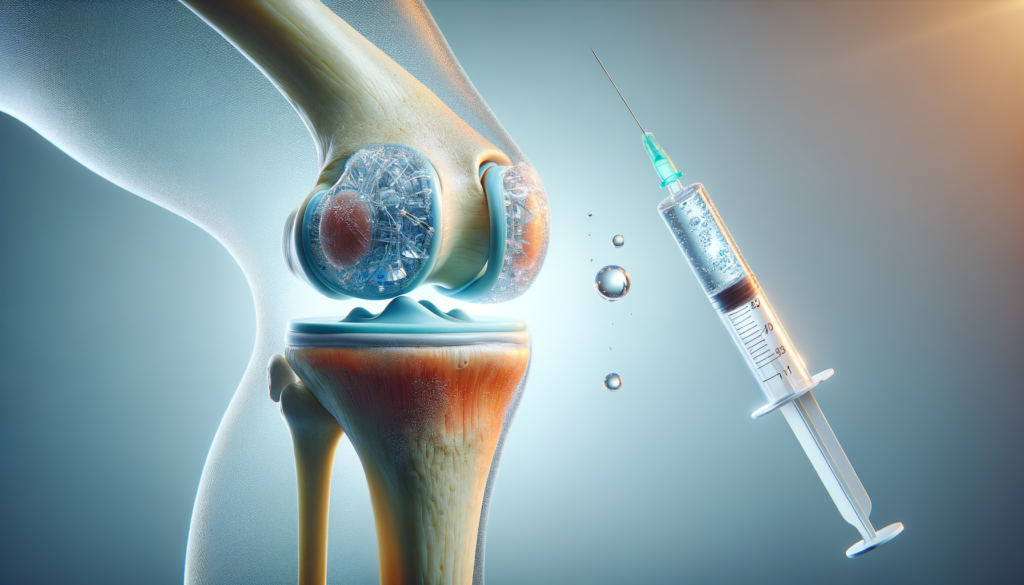The Technology Blog

What You Need to Know About Knee Gel Injections Today in Germany
Understanding Knee Gel Injections
Knee gel injections, also known as viscosupplementation, are a treatment option designed to provide relief from knee pain, particularly for those suffering from osteoarthritis. This procedure involves injecting hyaluronic acid directly into the knee joint. Hyaluronic acid is a naturally occurring substance in the synovial fluid that lubricates the joints. As we age or due to certain conditions, the concentration of this acid decreases, leading to increased friction and pain in the joints.
The primary goal of knee gel injections is to supplement the knee joint’s natural synovial fluid, thereby reducing pain and improving mobility. This treatment is particularly beneficial for individuals who have not found relief from other non-surgical treatments such as physical therapy or oral pain medications. It is also a viable option for those who may not be candidates for knee surgery due to various health reasons.
In Germany, knee gel injections have gained popularity due to their non-invasive nature and the potential for improving the quality of life without the need for extensive surgery. It’s important to note that while these injections can be effective, they are not a cure for osteoarthritis. Instead, they offer a way to manage symptoms and improve joint function.
The Procedure and What to Expect
The process of receiving knee gel injections is relatively straightforward. It typically begins with a consultation with a healthcare provider to determine if you are a suitable candidate. During the procedure, the doctor will clean the knee area and may use a local anesthetic to minimize discomfort. The hyaluronic acid is then injected directly into the knee joint.
Most patients report minimal discomfort during the injection process, and the entire procedure usually takes less than an hour. After the injection, it’s common for patients to experience some mild swelling or discomfort, but these symptoms typically subside within a few days. It’s advisable to avoid strenuous activities for a short period after the injection to allow the joint to settle.
The effects of knee gel injections can vary from person to person. Some individuals may experience significant pain relief within a few days, while others may take a few weeks to notice improvements. The duration of relief can also vary, with some patients experiencing benefits for several months. Regular follow-ups with the healthcare provider are essential to monitor the joint’s condition and determine if additional injections are needed.
Considerations and Potential Benefits
When considering knee gel injections, it’s crucial to weigh the potential benefits against the risks. One of the most significant advantages of this treatment is its ability to provide pain relief without the need for surgery. This can be particularly appealing to those who are not ready or able to undergo surgical procedures. Additionally, knee gel injections can be repeated if necessary, offering a flexible treatment plan tailored to individual needs.
However, like any medical procedure, there are potential risks and side effects to consider. These may include temporary injection site pain, swelling, or stiffness. In rare cases, there may be an allergic reaction to the hyaluronic acid. It’s essential to discuss these potential risks with your healthcare provider to make an informed decision.
For those living in Germany, access to knee gel injections is relatively straightforward, with many clinics offering this service. It’s advisable to consult with a specialist who has experience in administering these injections to ensure the best possible outcome. With proper care and consideration, knee gel injections can be a valuable tool in managing knee pain and improving overall joint health.
Conclusion: Is Knee Gel Injection Right for You?
Knee gel injections represent a promising option for individuals struggling with knee pain, particularly due to osteoarthritis. They offer a non-surgical approach to managing symptoms, potentially improving mobility and quality of life. However, it’s essential to approach this treatment with realistic expectations and a thorough understanding of both its benefits and limitations.
In Germany, the availability and accessibility of knee gel injections make them a viable option for many patients. By consulting with a knowledgeable healthcare provider, you can determine if this treatment aligns with your personal health goals and needs. As with any medical decision, informed discussions and evaluations are key to achieving the best possible outcomes.









